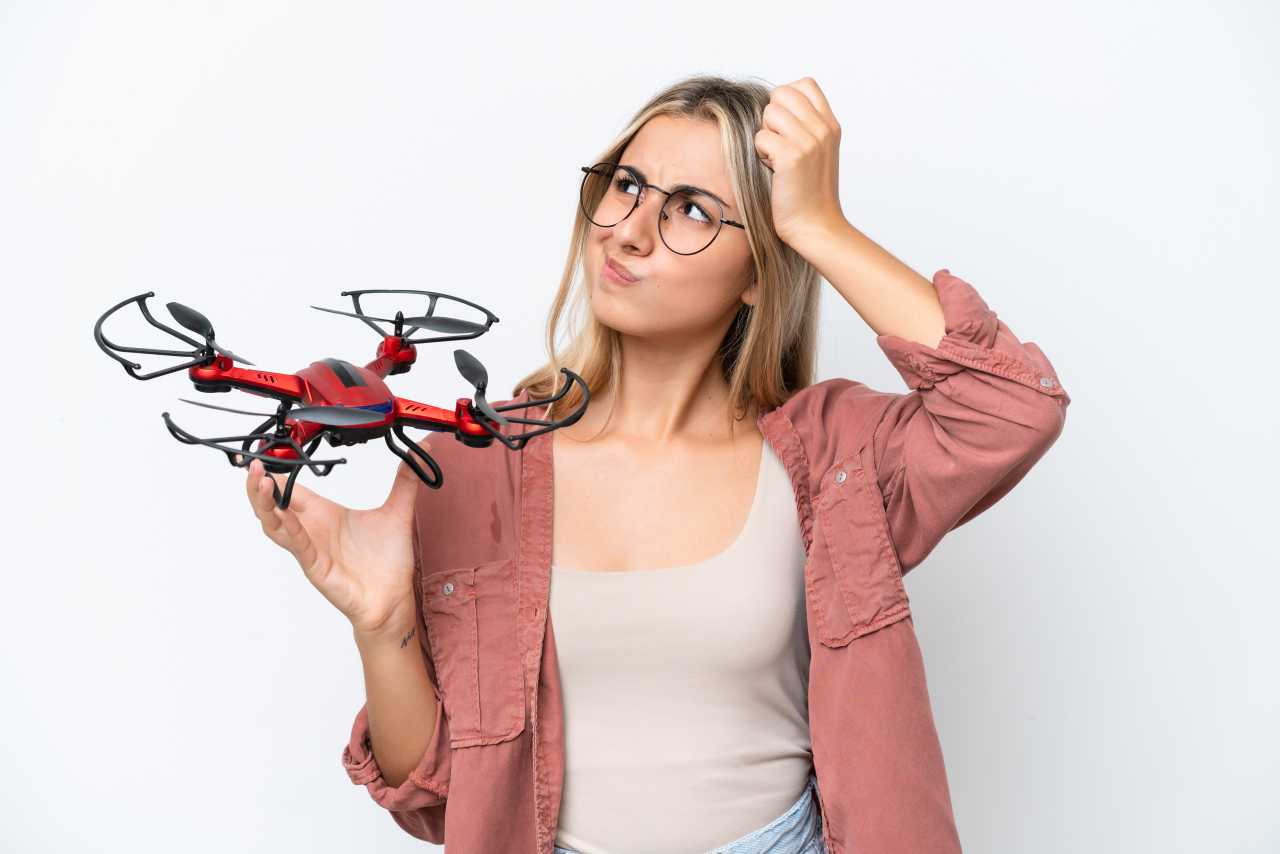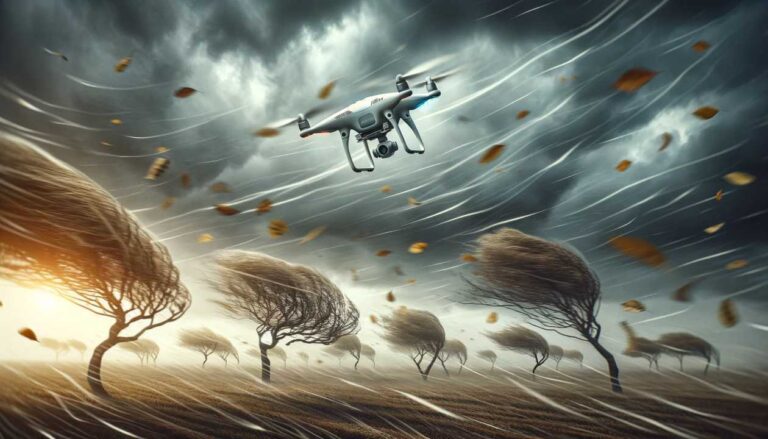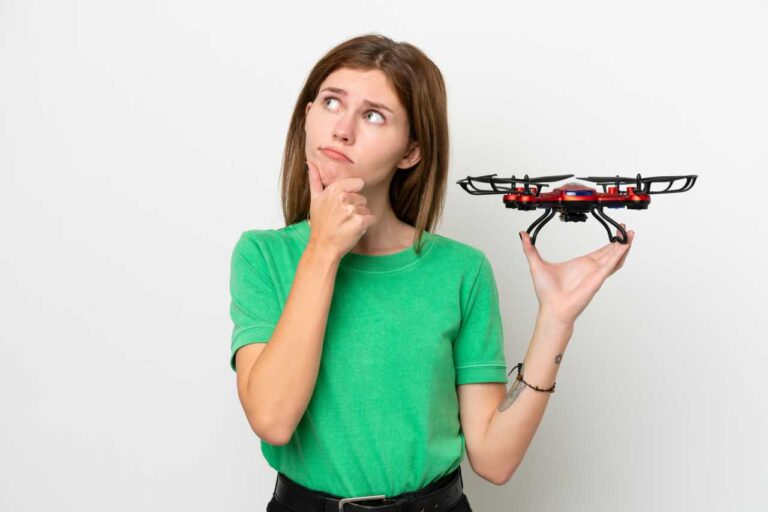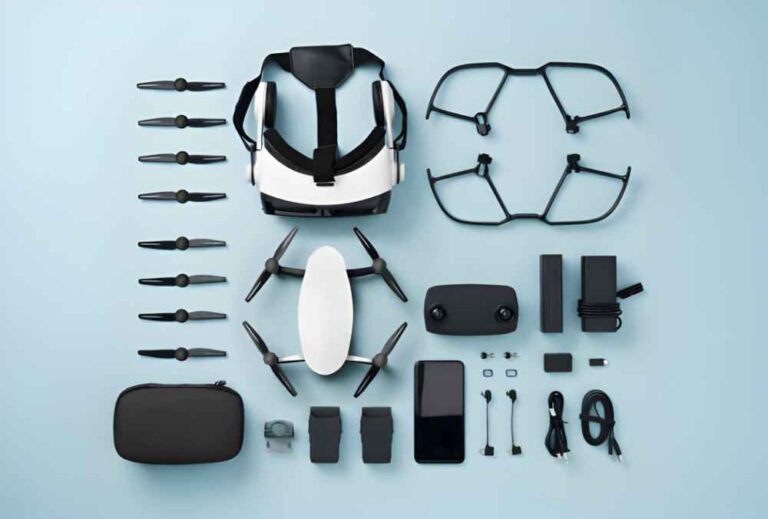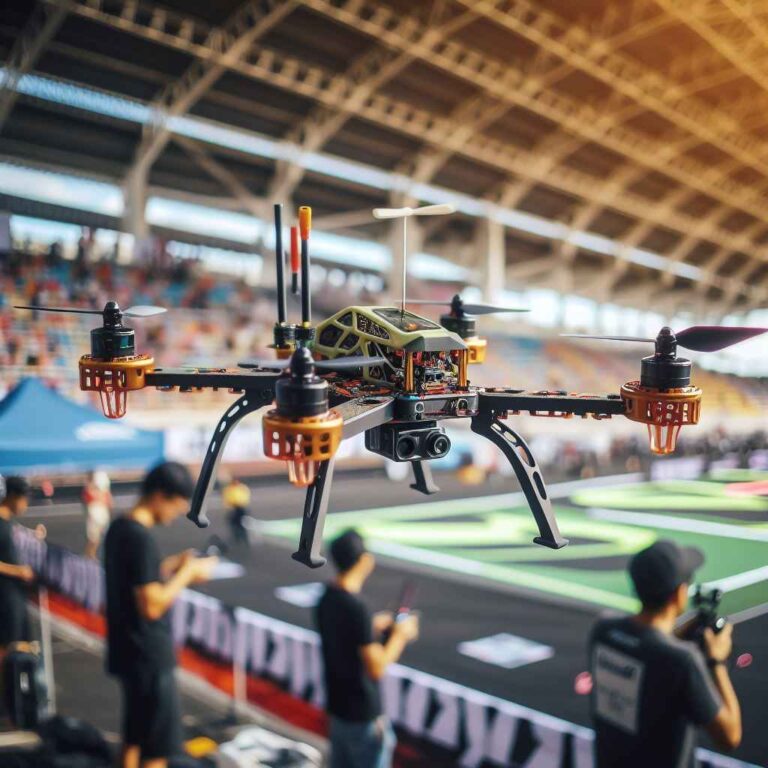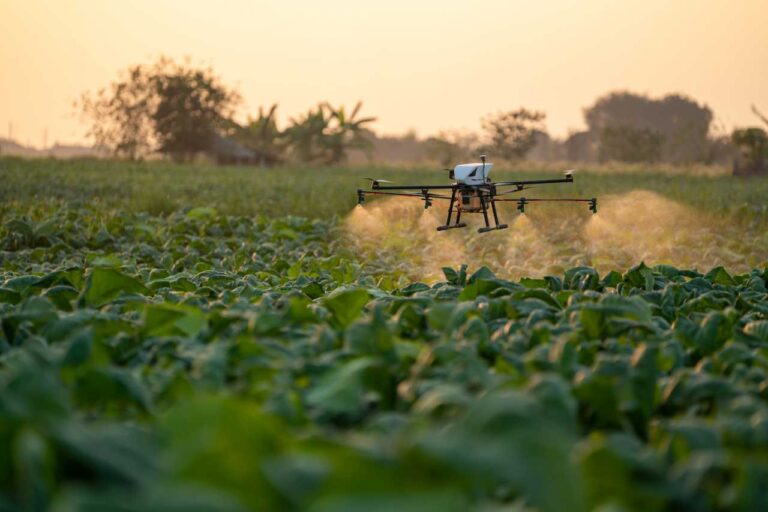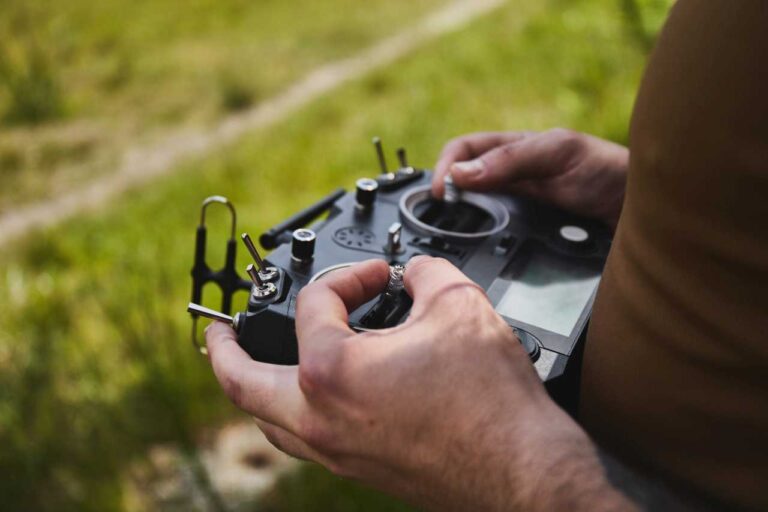Exploring what drones are used for today reveals a remarkable transformation in the drone industry. Over recent years, Unmanned Aerial Vehicles (UAVs), commonly known as drones, have transitioned from specialized applications to widespread use across various industries.
Both for commercial purposes and by individuals with their personal drones, the use of drones has expanded significantly.
The United States has been a major player in this transformation. The drone market has grown exponentially, showcasing the adaptability and versatility of these unmanned aircraft. From capturing breathtaking visuals to aiding in crucial tasks, the uses of drones are vast and varied. In this article, we will explore what drones are used for today, with references to our in-depth reviews in separate articles, where we investigate the best drone under 200 and the best drone under 500. These articles will guide you through the top choices in each price category, ensuring you find a drone that meets both your needs and budget.
What are some common uses for drones?

Some common uses for drones include aerial photography and videography, surveillance and security, search and rescue operations, delivery of goods, agriculture and crop monitoring, wildlife conservation, and even recreational purposes such as racing and drone photography competitions.
As we journey through this topic, we’ll trace the history of drones, understand the factors propelling the growth of the drone market, and delve into the myriad applications that have emerged across sectors.
What are drones used for?
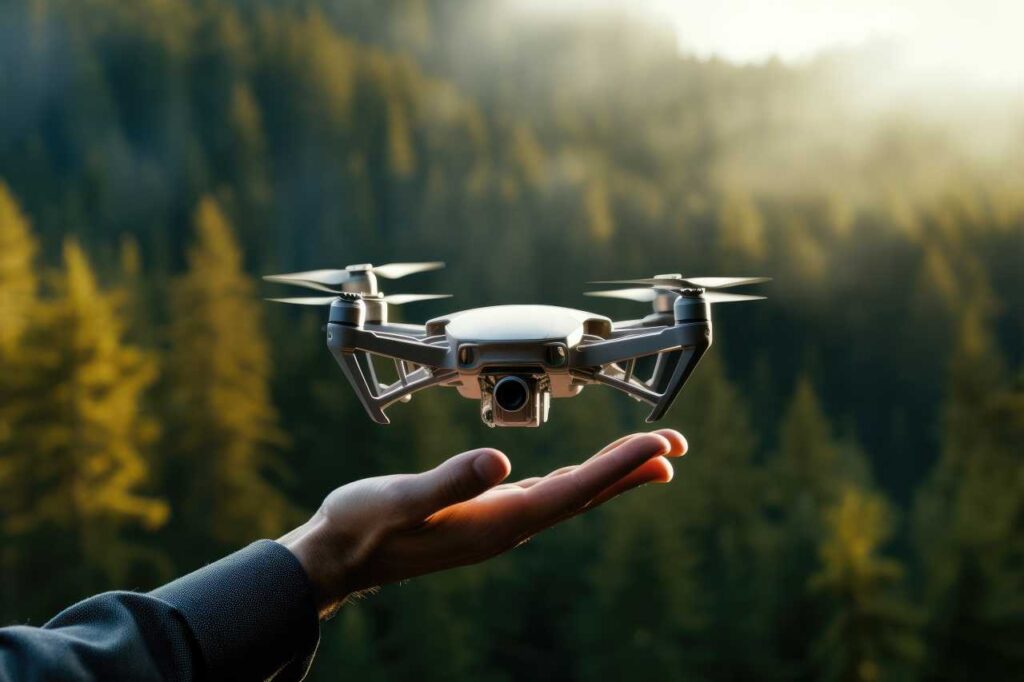
Drones, with their cutting-edge drone technologies, have seamlessly integrated into a wide array of different industries, showcasing their unparalleled versatility.
Understanding how drones work is crucial to appreciating their role and impact across these diverse sectors.
From Film and Photography to Telecommunications and Power Line Inspection, these unmanned aerial vehicles have transformed traditional operations, offering innovative solutions and benefits.
Their drone use extends to Real Estate, where they provide a bird’s-eye view of properties, and Agriculture, aiding in precision farming and crop monitoring.
In Law Enforcement, drones enhance surveillance capabilities, while in Shipping and Logistics, they promise efficient delivery mechanisms. The drone services market has burgeoned, reflecting their significance in modern industries.
As we navigate through this article, we’ll uncover the depth of their applications, emphasizing the technological advancements and the pivotal role they play in today’s world.
Film and Photography
Drones have revolutionized film and photography. Once, aerial shots were exclusive to big-budget films. Now, they’re accessible to all.
Aerial photography has changed the game. Independent creators can now capture stunning HD video. Unique angles and perspectives are now within reach.
Major films are harnessing drones. They’re replacing helicopters and cranes for certain sequences. This isn’t just about cost-saving; it’s about the visuals.
The rise of professional drone pilots is noteworthy. They’re in demand, and their role is significant. Drones with extended flight time and high-resolution capabilities are their tools.
These drones capture breathtaking visuals. From documentaries to feature films, their impact is evident. Sectors like real estate and tourism are seeking drone photographers more than ever.
Their role in modern visual storytelling is pivotal. The future of film and photography is exciting with drones in the picture.
Real Estate
Drones are transforming the real estate industry. With them, properties come alive in a way photos on a brochure never could.
Aerial photographs offer a fresh perspective. Buyers can see homes, roofs, yards, and neighborhoods from unique vantage points. Large estates? Hidden features? Drones capture them all.
But it’s more than just visuals. Drones are efficient tools for land surveys, especially in tricky terrains. This efficiency is reshaping the real estate industry.
However, there’s a legal side. Using drones for marketing requires a commercial drone pilot license and the Federal Aviation Administration (FAA) Remote Pilot Certificate.
For those venturing into drone-assisted photography, camera quality is crucial. Models like the DJI Mavic Air Quadcopter stand out in the industry.
Agriculture
The world of agriculture is buzzing, quite literally, with drones. These flying marvels are reshaping farming, turning traditional methods on their head.
Farmers now have eyes in the sky, scouting and monitoring crop health. With drones, they can swiftly spot nutrient deficiencies, pests, or diseases. This early detection is a game-changer, allowing timely interventions.
But it’s not just about crops. Detailed maps of fields, complete with elevation changes and boundaries, are now at a farmer’s fingertips.
These 3D insights, combined with other tools, empower farmers to analyze crop conditions meticulously.
Livestock management has seen a boost too. Checking on a cattle herd or inspecting livestock from a distance? Drones make it a breeze.
Soil health, the very foundation of farming, isn’t left behind. Drones dive in, collecting soil samples, ensuring farmers make informed decisions about fertilizers and pesticides.
Enter precision agriculture. It’s a system where every decision is backed by data. Drones play a pivotal role, collecting this data, ensuring every seed planted and treatment given is optimized for the best yields.
The numbers speak for themselves. From a $1.2 billion industry in 2019, drone use in agriculture is set to soar.
To $4.8 billion by 2024. It’s clear: drones are not just flying high; they’re taking agriculture to new heights.
Ensuring productivity, reducing costs, and minimizing environmental impact.
Infrastructure Inspection and Maintenance
In the world of infrastructure inspections, drones are revolutionizing the construction industry. These flying marvels are redefining the maintenance of essential structures like bridges, buildings, and energy facilities.
Traditional methods had their challenges. Scaling tall structures was risky. Manual inspections were costly and prone to errors.
Drones, however, are turning the tables. They navigate tough terrains with ease. They offer detailed views, ensuring thorough inspections.
Their edge lies in their advanced sensors and technologies. They don’t just capture visuals; they analyze them. From charting transmission lines to monitoring wind turbines, drones deliver unparalleled insights.
Consider real-world applications. Imagine a drone inspecting a hard-to-reach bridge section. It reduces manual inspection risks and guarantees a comprehensive assessment.
Law Enforcement
Drones are the new stars in the law enforcement arena, reshaping how agencies operate. These nimble devices have turned traditional surveillance methods upside down, offering unparalleled views of crime scenes. In this context, it’s equally important for law enforcement agencies to understand how to fly drones legally. This knowledge ensures that their operations are carried out within the boundaries of the law, maintaining the balance between effective surveillance and legal compliance.
With drones, law enforcement agencies swiftly scout rooftops, alleys, and crowds. They’re not just eyes in the sky; they’re force multipliers, amplifying on-ground efforts and ensuring officer safety.
Detailed crime scene maps? Drones craft them with precision. They’re invaluable for investigators, capturing top-down views and aiding in meticulous forensic analysis.
But it’s not all about tech prowess. The rise of drones stirs privacy debates. As their popularity soars, striking a balance between surveillance benefits and individual rights becomes crucial. It’s a dynamic era for policing, and drones are at its heart.
Shipping and Logistics
Drones are revolutionizing the shipping and logistics industry. These aerial devices offer faster, eco-friendly delivery methods, sending packages directly to doorsteps and reducing costs.
In warehouses, drones excel in inventory management. They swiftly locate goods, outpacing traditional methods. With their advanced mapping capabilities, they provide logistics and retail businesses with detailed views of shipping yards.
Safety is paramount, and drones ensure it. They monitor containers, ports, and terminals, providing real-time updates. As they venture into BVLOS operations, they navigate a maze of regulations.
The future of logistics is airborne. Drones promise efficiency and innovation, setting the stage for a transformed industry.
Consumer Delivery Service
Drones are taking the Consumer Delivery Service by storm. Imagine ordering a meal and having it flown directly to your balcony. That’s the magic of drone delivery.
Food deliveries via drones are becoming a common sight in some cities. No traffic, no delays, just your food soaring through the sky, reaching you while it’s still hot. But it’s not just food. Packages, gifts, and other consumer goods are also on the aerial delivery list.
The future? It’s airborne. As technology advances, we can expect even more items delivered via drones. But, like all innovations, challenges exist.
Regulatory hurdles and safety concerns are real. And how do consumers feel? There’s excitement, but also questions about privacy and job implications.
Yet, the trajectory is clear. Drones are set to play a pivotal role in reshaping the delivery landscape, making our lives a tad more convenient.
Geographical Mapping
Geographical Mapping is evolving, all thanks to drones. Traditional methods are taking a backseat. Drones, with LiDAR sensors, are the new mapping maestros.
They’re not just fast; they’re precise. Vast terrains get mapped in mere hours. The detail is unparalleled, making every contour visible.
3D mapping is another feather in their cap. Drones craft intricate models, revealing terrain secrets. It’s a game-changer, especially for urban planners.
Historical mapping was laborious. Drones changed the game. With advanced remote sensing, they’ve set new standards.
Real-time mapping has vast applications. Urban development, environmental studies, you name it. Drones ensure every map is up-to-date.
In short, drones are redefining Geographical Mapping. They’re the blend of tech and topography we didn’t know we needed.
Medical and Cargo Delivery
The realm of Medical and Cargo Delivery is witnessing a revolution, courtesy of drones. Traditional delivery methods are being overshadowed. In their place, drones are emerging as the champions of urgent medical deliveries.
Speed and efficiency are of the essence. Drones deliver medical samples in record time. The precision is unmatched, ensuring vital supplies reach their destination intact.
Contactless medical deliveries are a boon, especially in emergencies. Drones ensure that critical medicines and equipment reach even the most remote locations. It’s a lifeline for many, especially in hard-to-reach areas.
Historically, delivering to remote locations was a challenge. Drones have changed that narrative. Their ability to navigate tough terrains makes them indispensable in medical scenarios.
However, scaling such operations isn’t without challenges. Regulatory hurdles, safety concerns, and technological limitations exist. Yet, the trajectory is clear. Drones are set to play a pivotal role in reshaping the medical delivery landscape.
Search and Rescue Operations
Drones are game-changers in Search and Rescue Operations. Gone are the days of slow, ground-based searches. Now, drones fly high, scanning vast areas in no time.
They give rescue teams real-time visuals. This means faster action when minutes count. In natural disasters, drones are the eyes in the sky, spotting those in need.
A mountain hiker lost last year was found by drones in hours, not days. Such real-life rescues show the power of these flying helpers.
Drones excel because of their tech. Cameras, sensors, and more help them see where humans can’t. They’re like superheroes, soaring above, looking out for us.
The future looks bright. Drones will play a bigger role in saving lives, especially when disasters strike.
Environmental Monitoring and Conservation
Drones are revolutionizing Environmental Monitoring and Conservation. These flying marvels offer a fresh perspective, literally from the sky.
They provide non-intrusive monitoring. Sensitive ecosystems remain undisturbed as drones hover above, capturing vital data. This is especially crucial for assessing water quality and tracking wildlife populations.
Traditional wildlife monitoring had its challenges. Dense forests, rough terrains, and elusive animal species made the task daunting. Drones, with their aerial vantage, change the game.
Illegal poaching threatens many species. Drones step in here too. Their vigilant eyes spot poachers, aiding conservation efforts and ensuring the safety of endangered species.
The future looks promising. As technology advances, drones will play an even more significant role in conservation strategies, ensuring our planet’s treasures are preserved for generations.
Surveillance in National Security
Drones have become a cornerstone in Surveillance for national security. Their aerial capabilities offer government agencies unparalleled advantages in defense.
The MQ-9 Reaper, a prominent military drone, delivers real-time visuals. From border patrolling to monitoring sensitive areas, its insights are invaluable.
Their strategic role in defense strategies is undeniable. Drones swiftly identify threats, ensuring our borders remain impenetrable. Their adaptability across various military operations sets them apart.
But, as drones soar in surveillance, a challenge emerges: balancing national security with privacy concerns. It’s a delicate act, ensuring both safety and individual rights.
Telecommunications and Power Line Inspection
Drones are revolutionizing the Telecommunications and Power Line Inspection sectors. Their aerial capabilities make inspections safer and more efficient.
Traditional manual inspections pose risks. Climbing tall structures and dealing with high-voltage equipment are challenges. Drones eliminate these dangers, ensuring thorough and safe inspections.
Exploring the question of how far can drones fly is essential in understanding their capabilities for conducting inspections efficiently and comprehensively.
Efficiency gains with drones are notable. They swiftly cover vast areas, capturing detailed visuals. This speeds up the process and reduces costs.
Innovations in drone technology lead this change. Advanced sensors and cameras ensure precise data collection.
However, technology isn’t the only factor. FAA regulations play a role. The Federal Aviation Administration sets guidelines for safe inspections without compromising airspace security.
Regulations, Ethics, and Safety Concerns
Drones, while transformative, come with their set of challenges. Federal Aviation Administration (FAA) regulations guide their usage, ensuring airspace safety.
The evolving landscape of drone regulations is evident. As drones become more prevalent, government agencies worldwide adapt their guidelines. This ensures both innovation and public safety coexist.
But regulations aren’t just about flight paths. Privacy concerns are at the forefront. Drones, with their aerial view, can inadvertently invade personal spaces. Balancing technological prowess with privacy is a global challenge.
Safety is paramount. For drone pilots, adhering to protocols is non-negotiable. Many countries now mandate a remote pilot certificate. This ensures only trained professionals operate drones, minimizing risks.
However, regulations vary globally. What’s permissible in one country might be restricted in another. This disparity can be a hurdle for international drone operations.
The Future Uses of Drones
Drones, once a niche gadget, are now at the forefront of technological innovation. The drone industry is evolving, driven by advancements in artificial intelligence and aircraft systems.
Aerial LiDAR technology, paired with drones, is reshaping 3D modeling. It offers detailed insights crucial for urban planning and environmental studies.
Another trend is Drones-as-a-Service. Tailored drones cater to diverse industry needs, from agriculture to entertainment.
The integration of AI in drones is transformative. Autonomous drones promise efficiency in logistics, ensuring timely deliveries.
Drones are also pivotal in monitoring renewable energy sources. They identify optimal spots for solar or wind installations.
Enhancements in battery life and software capabilities mean drones operate longer and tackle complex tasks. But advancements bring challenges. Balancing autonomous flight opportunities with safety is crucial.
As drones enter new sectors, addressing ethical concerns, especially privacy, is vital.
The future for drones is promising. With adaptive regulations and tech progress, their potential applications are vast.

